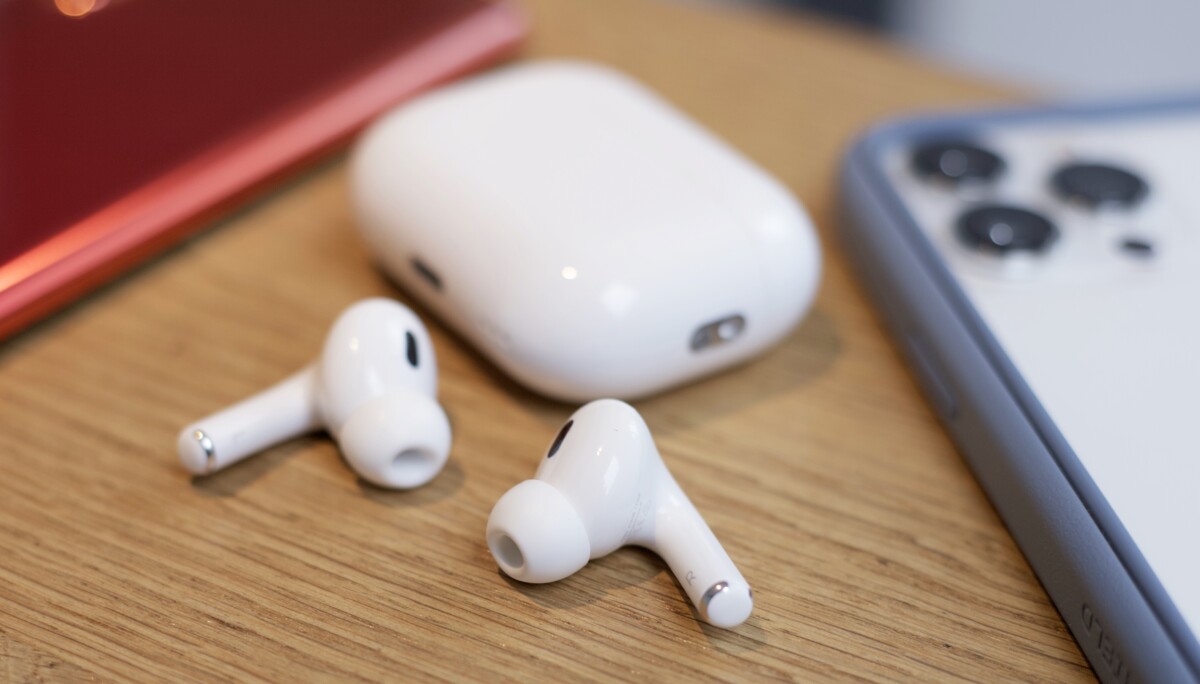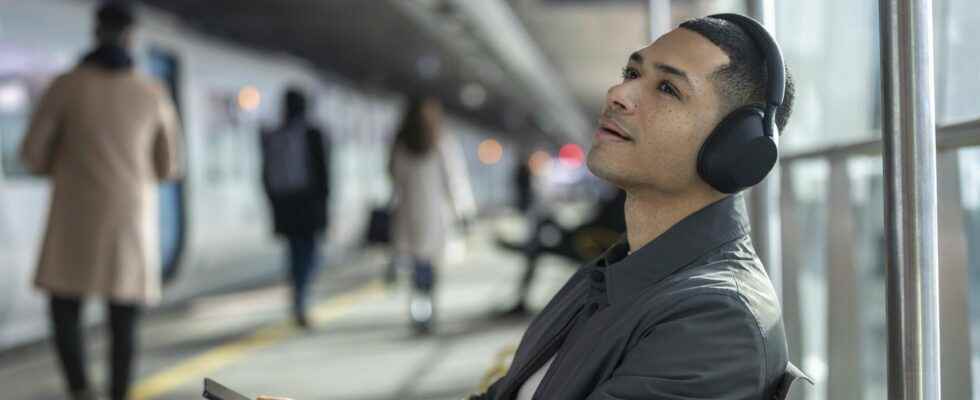Listening to music in public transport, without being disturbed by surrounding noise and even immersed in a bubble of calm, this is what active noise reduction systems offer. If all headphones and earphones are not equal, it is because there are several types of ANC and the process is complex. Here’s why.
It’s a fact, all earphones and headphones passively isolate ambient noise. But not enough to preserve the quality of the sound broadcast, nor provide the listener with real comfort when moving outside. Admittedly, the simple fact that a helmet covers the ears or, for earphones, engages in the auditory canal, is enough to prevent certain sounds from reaching the eardrums. This is called passive isolation, or passive noise reduction.
But it is essentially the highest-pitched sounds, the energy of which is insufficient to pass through the helmet, which are thus blocked. On the other hand, the lowest sounds reach the ears without difficulty, mix with the music and make it less intelligible. In addition, the low frequencies of the surrounding sounds very often cancel, at least partially, those of the music, which greatly alters the listening experience and quickly causes auditory fatigue.
What does active noise reduction do?
Active Noise Cancellation (ANC) or active noise reduction, is a technology integrated into certain Bluetooth headphones and earphones, which makes it possible to reduce or completely cancel certain parasitic noises around the listener, in order to improve the conditions of ‘listen.

ANC is especially valuable outdoors, in places with crowds or vehicles, as well as on public transport, with planes and trains in mind.
Active noise reduction, does it really work?
Not all wireless earphones or Bluetooth headsets have an active noise reduction system, but those that offer it offer listening comfort that is often striking and sometimes exceptional. It must be said that, from one model to another, the active noise reduction works more or less effectively, for reasons that we will explain. The most efficient ANC systems truly plunge the listener into a bubble of calm, where only a few ambient sounds filter through, muted to the extreme and easily eclipsed by the music listened to.
How does active noise reduction work?
The first active noise-canceling Bluetooth earphones and headphones appeared on the market about a decade ago, thanks to advances in the miniaturization of audio amplifiers and computing power. However, research on noise reduction began in the 1950s, initially to improve the comfort of airplane pilots. In France, the Multi-engine company was thus entrusted by Dassault with the mission of creating a device capable of capturing low-pitched sounds in the cockpits of its aircraft. The device developed is then entirely passive: it is a box in which there is a resonator tube which, when it vibrates under the action of the noises of the aircraft, emits a sound ” reverse which cancels out some of the ambient noise. A few years later, Multimotors became Elipson, a manufacturer of legendary loudspeakers.

But back to our sheep, active noise reduction in headphones works a little differently all the same, by means of microphones, a processor and with the help of transducers. However, the principle is the same: the sounds coming from outside are captured, analyzed and then broadcast in the exact opposite direction. They then mix with the noises that pass through the earpieces of the headphones, to be canceled just at the entrance to the ear. There is nothing magical about this, nor smoky, and it is fluid mechanics.
When at sea two waves meet frontally, they partially or totally neutralize each other if their energy is equal. The same is true in air for sound waves.
The whole point of active noise reduction is to finely measure the direction of propagation of surrounding noise, from 0 to 360° and for the 20,000 frequencies of the audible spectrum… several hundred or even thousands of times each second. Concretely, a disturbing sound at 100 Hz arriving at the microphone with an angle of 0°, is reproduced via the transducers with an equivalent intensity and an angle of 180°. At the hollow of the ear, the two 100 Hz frequencies meet, cancel each other out and the noise is eliminated.
Why are some ANCs very efficient and others less so?
Obviously, the quality of the microphones influences the overall performance of the ANC. Poor capture necessarily results in the dissemination of less effective inverted sound. The role of the processor associated with the microphones is also crucial, since it must digitize the parasitic sounds, determine which are the most annoying, and, for the most sophisticated headphones, check and correct the accuracy of the inverted sounds diffused by the transducers. And all of this must be done in real time, or at least without perceptible defect.

Finally, the performance of the transducers impacts the effectiveness of the ANC. They must be able to produce a strong volume of low frequencies, but also be precise in high tones. However, powerful transducers in the bass are by definition less alert in the midrange and treble, because their membrane is thicker and heavier. In short, there is a complex balance to be found between microphones, processor and transducers.
The three major active noise reduction technologies
There are three types of noise reduction with different operations and results, depending on whether the microphones are located outside the ear, inside, or on both sides.
The ANC feedforward
In this ANC system, the microphones are installed externally and pick up extraneous sounds directly, which are digitized, inverted, converted to analog and broadcast by the transducers. This system is imperfect because the sounds picked up outside are obviously not those that reach the ears of the listener. The materials of the helmet and the shape of each user’s ear modify the sounds to be reduced, in a way that is very complicated to model.
ANC feedforward typically produces a phenomenon of eardrum suction, particularly marked on first-generation earphones and headphones, linked to the excessively high intensity of the inverted low frequencies.
ANC feedback
In this system, the microphones are installed inside the helmet and measure the extraneous noises that actually reach the ear. The inverted noise generated is therefore much more precise. But ANC feedback comes up against a major pitfall: the music emitted by the transducers is inevitably picked up and the on-board processor must therefore sort between the musical signal – which should not be canceled – and the annoying noises.

The ANC feedback is also imperfect and the earphones and headphones using it are the ones that color the sound the most when the system is active.
The hybrid ANC
This is the most advanced active noise reduction. Hybrid ANC combines feedforward and feedback techniques. The internal microphones are used to verify that the sounds picked up by the external microphones are appropriately reduced. If not, the intensity of the reverse sound is increased and the phase angle adjusted. This technology is more complex to develop and requires high computing power. In fact, the headphones and earphones that use it are the most expensive.
Hybrid ANC is currently the best performing active noise reduction.
Does active noise reduction degrade audio quality?
In essence, active noise reduction systems deteriorate the broadcast sound. When we inject the frequencies of the surrounding noises in phase inversion, which frequencies are inevitably also found in the musical signal, we necessarily reduce the intensity of certain sounds in the music listened to, or even their phase, which modifies the sound scene a little. .
In the bass, it is not very annoying, because our ear is not very sensitive to fine variations in low frequencies. In the medium, on the other hand, it is potentially annoying because the human ear is excessively sensitive to these frequencies. It is no coincidence that most active noise reduction systems stop working above 1000 Hz.

But that’s not all… The functioning of the transducers is considerably disturbed by the ANC, which causes them to produce low-pitched sounds that are sometimes very high in intensity (especially in planes or in the metro). However, under these conditions, the membrane moves excessively and loses its precision in the midrange and treble.
What is Adaptive Active Noise Cancellation?
By definition, all active noise reduction systems adapt to ambient noise conditions. However, some manufacturers are promoting adaptive technology in their ANC. It is actually a variable intensity level, often with three steps, which can be chosen by the user in the mobile application for controlling headphones or earphones, or automatically.
This adaptive reduction essentially makes it possible to reduce the consumption of the helmet and to preserve its autonomy. By choosing the level of ANC yourself, you can reduce its impact on sound quality.
What are the best noise canceling headphones and headphones
Some brands have specialized in active noise reduction, to the point that their headphones and earphones are sometimes used to isolate themselves from the hubbub of a train or plane.
This is the case with Bose, for example, with the Bose QuietComfort Earbuds II headphones, which are also very good acoustically. Sony is not to be outdone with the Sony WF-1000XM4, while Apple with its AirPods Pro 2 offers an amazing ANC/musicality ratio.
As for headphones, the Bose Headphones 700, Sony WH-1000XM5 and Apple AirPods Max are highly recommended.
To follow us, we invite you to download our Android and iOS application. You can read our articles, files, and watch our latest YouTube videos.


